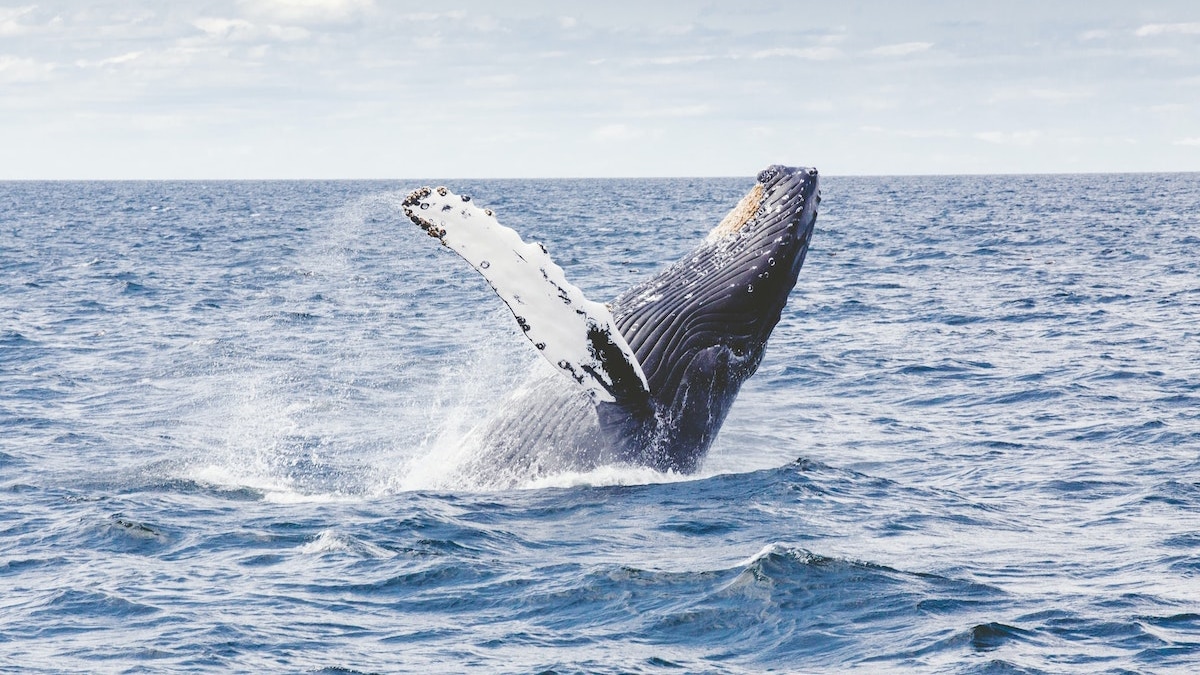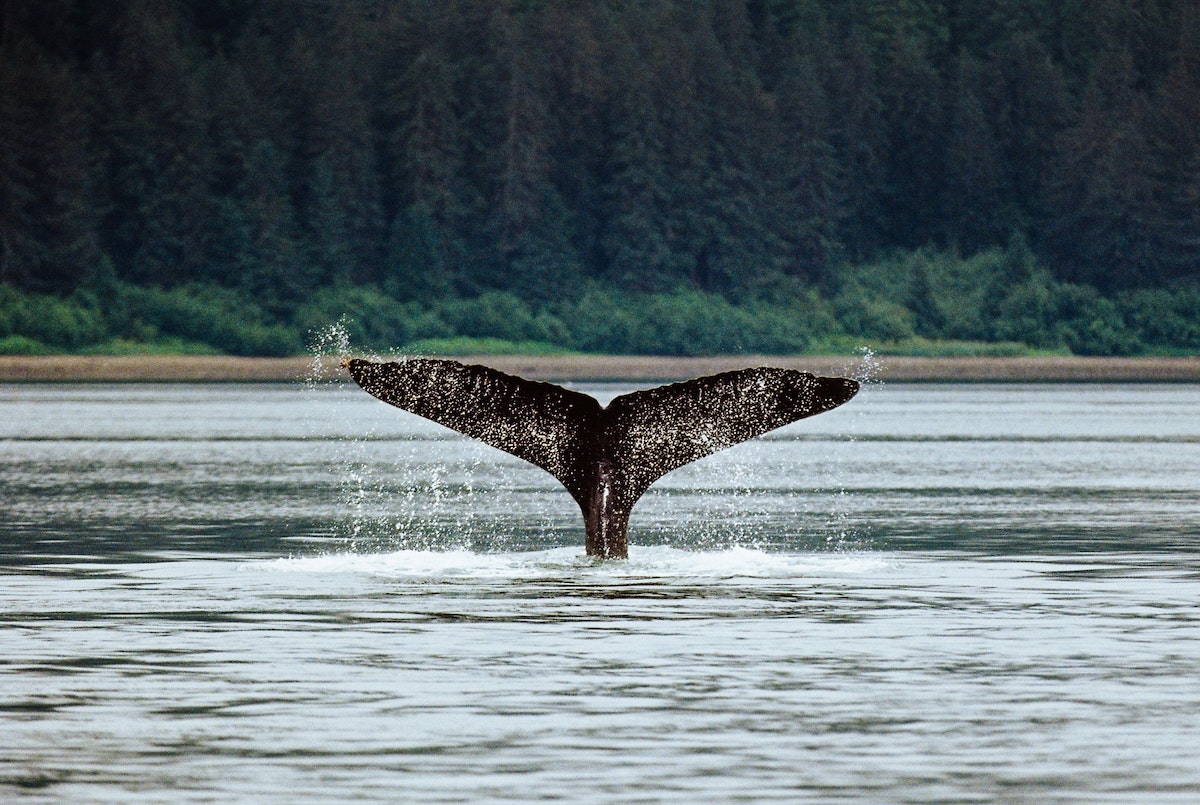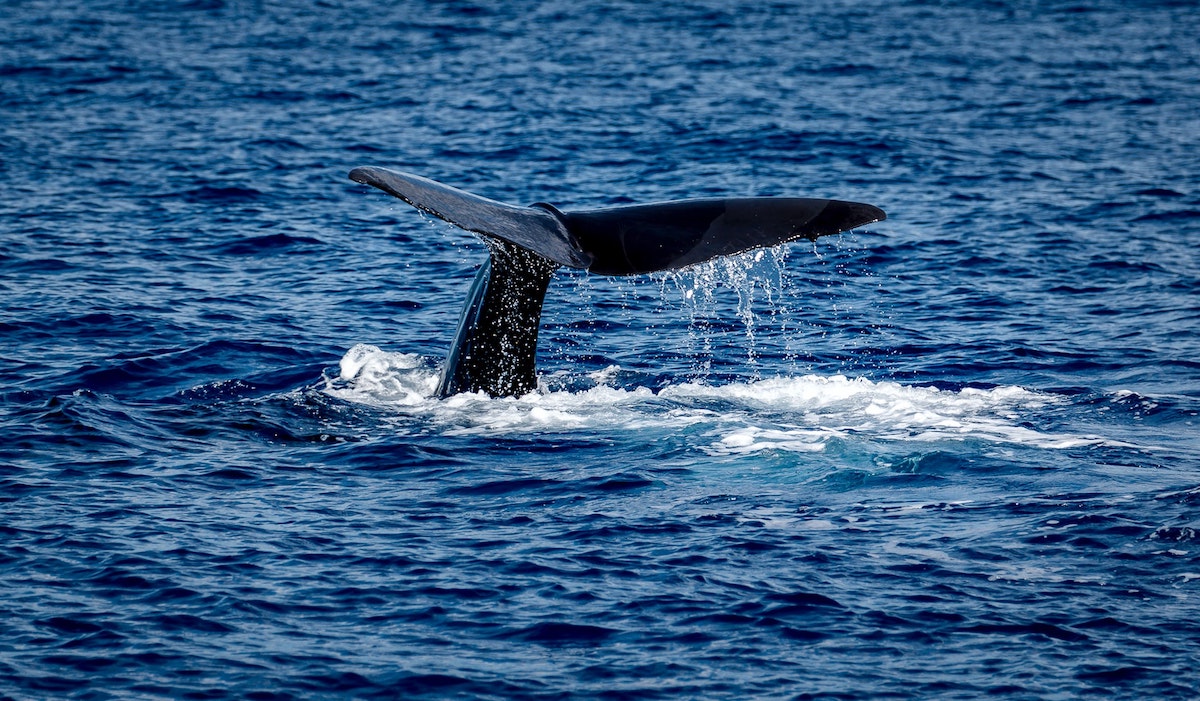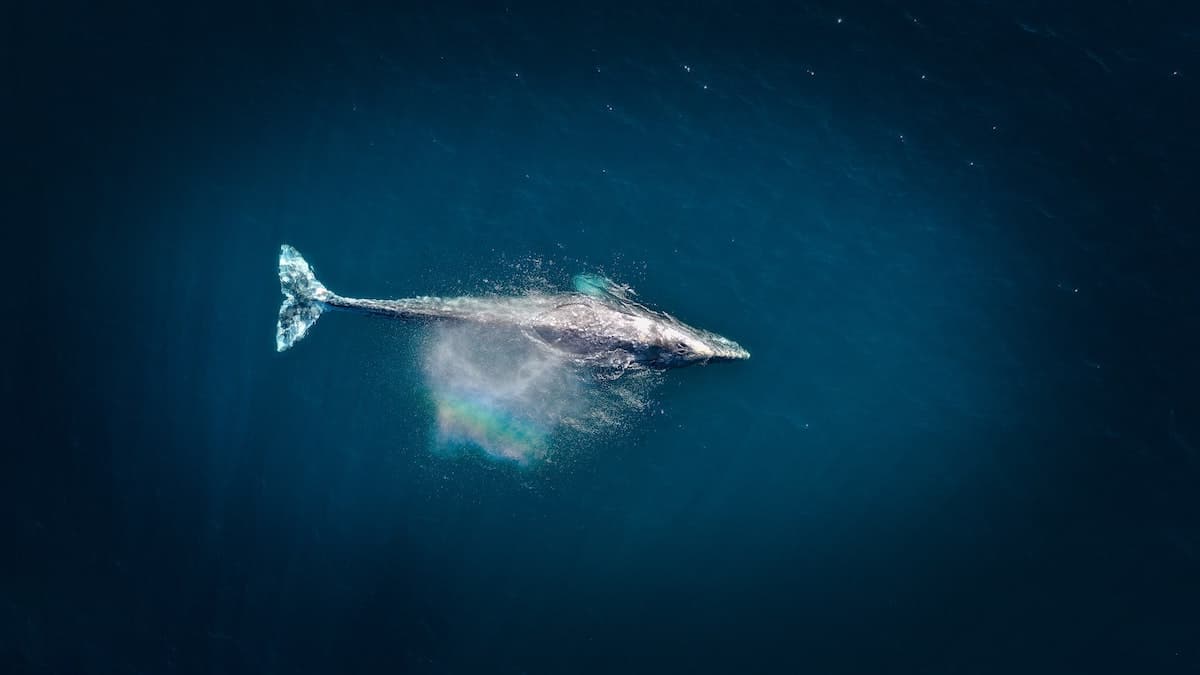Marine Life & Conservation Blogs
The world’s 12 best places to snorkel with whales

Whales have captivated our imagination for centuries and snorkeling with whales is one of life’s best experiences. Whether you want to meet them in the tropics or under the Arctic sun, there is a whale adventure for you. Here is our guide to the world’s best places to snorkel with whales.
HUMPBACK WHALES
Humpback whales are found at destinations worldwide, making them easy to spend time with. These huge whales are known for their spectacular breaches and complex song and are just as rewarding whether you watch them from a boat or get in the water.
- Tonga
If you want to snorkel in clear blue waters with humpback mothers and their calves, visit Tonga. It is one of the most popular places to swim with humpbacks, where you can choose from day safaris or longer trips. Just make sure you book early so you don’t miss out.
When to go: July to September.
- Moorea, French Polynesia
French Polynesia is the perfect place to combine a luxurious getaway with a humpback whale swim safari and world-class snorkeling. There are endless snorkeling spots, beautiful beachside resorts and numerous whales. If you want to try scuba diving for the first time, the diving in Moorea is ideal for beginners. The reefs are pristine, the waters are sheltered, and you can swim with Moorea’s famously friendly stingrays whilst you’re there.
When to go: July to November.
- Silver Bank, Dominican Republic
The Silver Bank marine reserve provides a safe winter haven for the North Atlantic humpback whale population whilst they gather to mate, calve and raise their young. There are various liveaboard operators that offer multi-day safaris dedicated solely to learning about and swimming with these charming whales. This is a great option if you want to immerse yourself fully in the world of whales.
When to go: January to April.
4. Ningaloo Reef, Western Australia
UNESCO-listed Ningaloo Reef hosts tens of thousands of humpback whales each year and is also a migratory route for dolphins, dugongs and manta rays. Lacking the crowds of Australia’s Great Barrier Reef, it is the most peaceful place to swim with humpback whales in Australia.
When to go: July to November.
- Hervey Bay, Queensland, Australia
Hervey Bay – the world’s first World Whale Heritage Site – has been called the whale watching capital of the world, thanks to its abundant humpbacks. This conservation-focused destination is just a 3.5-hour drive north of Brisbane and offers day trips to swim with the whales.
Time your trip right and you can also enjoy the annual Hervey Bay Whale Festival and Paddle Out for Whales.
When to go: July to November.
- Reunion Island
Réunion lies 550 km east of Madagascar and is a lesser-known humpback whale hotspot. With only a handful of people allowed in the water at any one time, it is a great destination for more intimate whale encounters.
When to go: August to September.
- Iceland
Iceland’s rich waters are a prime feeding ground for humpbacks and offer a unique whale swim experience. Wearing a cozy dry suit, you can spend hours admiring these whales in Iceland’s incredible gin-clear waters.
When to go: June to August.
DWARF MINKE WHALES
These pint-sized whales grow up to 8 meters long and were only discovered in the 1980s. They might be relatively new to the whale watching scene, but they are wonderful to swim with.
- Great Barrier Reef, Australia
Known for being exceptionally friendly, dwarf minke whales create truly memorable encounters as they swim around you, under you and sometimes even between your fins.
Hop on a minke whale safari at Cairns and enjoy. Go snorkeling or try Great Barrier Reef diving whilst you’re there to experience the incredible wonders of this enormous reef system.
When to go: June to July.
SPERM WHALES
Weighing up to 50 tons and reaching 15 – 20 meters long, sperm whales are one of the most sought-after and impressive whale species to swim with.
- Dominica
The sheer drop-offs and deep sheltered bays around Dominica are perfect for sperm whales, and the females and calves stay there all year. After just a short boat ride from the coast, you will be swimming with these amazing animals in calm azure waters.
When to go: Year-round, though November to March is peak season.
BLUE WHALES
Weighing up to a staggering 200 tonnes, blue whales are enormous, and there are two great places you can swim with them.
- Sri Lanka
Sri Lanka is one of the only places where you can swim with blue whales, watch them from a boat, or go whale spotting in small airplanes – which is arguably the best way to get an idea of their sheer size.
When to go: March to April.
- San Diego, California
Baja California hosts the largest population of blue whales in the world every summer and there are a small number of operators that offer blue whale swimming safaris from San Diego. With small group sizes and week-long programs, they are perfect for maximizing your time with these huge whales.
When to go: June to October.
BELUGA WHALES
Beluga whales are easy to recognize thanks to their bright white coloring and rounded heads. These highly social animals are one of the most vocal whales and gather in large groups in Canada.
- Churchill, Canada
Tens of thousands of beluga whales gather each year in Hudson Bay and the small town of Churchill offers unique trips to swim with them. You can enjoy close-up encounters with hundreds of belugas in the water, plus spot polar bears, moose, Arctic foxes and more whilst you’re there.
When to go: June to September.
If you can’t get enough of whales, read the SSI guide to diving with whales to discover even more destinations where you can meet these giants of the ocean.
Kathryn Curzon, a shark conservationist and dive travel writer for Scuba Schools International (SSI), wrote this article.
Blogs
The Ocean Cleanup Breaks 10,000,000 KG Barrier

The Ocean Cleanup, the global non-profit project, has removed a verified all-time total of ten million kilograms (22 million lbs.) of trash from oceans and rivers around the world – approximately the same weight as the Eiffel Tower.
To complete its mission of ridding the oceans of plastic, The Ocean Cleanup uses a dual strategy: cleaning up the Great Pacific Garbage Patch (GPGP) to remove the plastic already afloat in the oceans, while stopping the flow of plastic from the world’s most polluting rivers.
Through cleaning operations in the GPGP and in rivers in eight countries, the cumulative total of trash removed has now surpassed ten million kilograms. This milestone demonstrates the acceleration of The Ocean Cleanup’s impact, while underlining the astonishing scale of the plastic pollution problem and the need for continued support and action.
While encouraging for the mission, this milestone is only a staging point: millions more tons of plastic still pollute our oceans and The Ocean Cleanup intends to continue learning, improving and innovating to solve this global catastrophe.
This announcement comes as governments from around the world meet to continue negotiations to develop a new legally binding instrument to end plastic pollution at INC4 in Ottawa, Canada. Representatives of The Ocean Cleanup will be in attendance and the organization will be urging decision-makers to collaborate towards a comprehensive and ambitious global treaty which addresses plastic at all stages of its life cycle and in all marine environments worldwide, including in areas beyond national jurisdiction.
It is encouraging to see that the need for remediation is reflected in the various options for potential treaty provisions. It is essential that the final treaty contains clear targets for the remediation of legacy plastic pollution, and reduction of riverine plastic emissions.
Tackling plastic pollution requires innovative and impactful solutions. The treaty should therefore incentivize the innovation ecosystem by fostering innovations that make maximal use of data, technology and scientific knowledge – such as those designed and deployed by The Ocean Cleanup.
‘After many tough years of trial and error, it’s amazing to see our work is starting to pay off – and I am proud of the team who has brought us to this point.’ said Boyan Slat, Founder and CEO of The Ocean Cleanup. ‘While we still have a long way to go, our recent successes fill us with renewed confidence that the oceans can be cleaned.’
The Ocean Cleanup was founded in 2013 and captured its first plastic in 2019, with the first confirmed catch in the GPGP coming soon after the deployment of Interceptor 001 in Jakarta, Indonesia. After surpassing one million kilograms of trash removed in early 2022, the non-profit project has since progressed to the third iteration of its GPGP cleaning solution, known as System 03, and a network of Interceptors currently covering rivers in eight countries, with more deployments set for 2024.
About The Ocean Cleanup
The Ocean Cleanup is an international non-profit organization that develops and scales technologies to rid the world’s oceans of plastic. They aim to achieve this goal through a dual strategy: stemming the inflow via rivers and cleaning up the legacy plastic that has already accumulated in the ocean. For the latter, The Ocean Cleanup develops large-scale systems to efficiently concentrate the plastic for periodic removal. This plastic is tracked and traced through DNV’s chain of custody model to certify claims of origin when recycling it into new products. To curb the tide via rivers, The Ocean Cleanup has developed Interceptor™ solutions to halt and extract riverine plastic before it reaches the ocean. Founded in 2013 by Boyan Slat, The Ocean Cleanup now employs a broadly multi-disciplined team of approximately 140. The foundation is headquartered in Rotterdam, the Netherlands.
For more information, visit: theoceancleanup.com and follow @theoceancleanup on social media.
Marine Life & Conservation Blogs
Creature Feature: Dusky Shark

 In this series, the Shark Trust will be sharing amazing facts about different species of sharks and what you can do to help protect them.
In this series, the Shark Trust will be sharing amazing facts about different species of sharks and what you can do to help protect them.
This month we’re taking a look at the Dusky Shark, a highly migratory species with a particularly slow growth rate and late age at maturity.
Dusky sharks are one of the largest species within the Carcharhinus genus, generally measuring 3 metres total length but able to reach up to 4.2 metres. They are grey to grey-brown on their dorsal side and their fins usually have dusky margins, with the darkest tips on the caudal fin.
Dusky Sharks can often be confused with other species of the Carcharhinus genus, particularly the Galapagos Shark (Carcharhinus galapagensis). They have very similar external morphology, so it can be easier to ID to species level by taking location into account as the two species occupy very different ecological niches – Galapagos Sharks prefer offshore seamounts and islets, whilst duskies prefer continental margins.
Hybridisation:
A 2019 study found that Dusky Sharks are hybridising with Galapagos Sharks on the Eastern Tropical Pacific (Pazmiño et al., 2019). Hybridisation is when an animal breeds with an individual of another species to produce offspring (a hybrid). Hybrids are often infertile, but this study found that the hybrids were able to produce second generation hybrids!
Long distance swimmers:
Dusky sharks are highly mobile species, undertaking long migrations to stay in warm waters throughout the winter. In the Northern Hemisphere, they head towards the poles in the summer and return southwards towards the equator in winter. The longest distance recorded was 2000 nautical miles!
Very slow to mature and reproduce:
The Dusky Shark are both targeted and caught as bycatch globally. We already know that elasmobranchs are inherently slow reproducers which means that they are heavily impacted by overfishing; it takes them so long to recover that they cannot keep up with the rate at which they are being fished. Dusky Sharks are particularly slow to reproduce – females are only ready to start breeding at roughly 20 years old, their gestation periods can last up to 22 months, and they only give birth every two to three years. This makes duskies one of the most vulnerable of all shark species.
The Dusky Shark is now listed on Appendix II of the Convention on the Conservation of Migratory Species (CMS), but further action is required to protect this important species.
Scientific Name: Carcharhinus obscurus
Family: Carcharhinidae
Maximum Size: 420cm (Total Length)
Diet: Bony fishes, cephalopods, can also eat crustaceans, and small sharks, skates and rays
Distribution: Patchy distribution in tropical and warm temperate seas; Atlantic, Indo-Pacific and Mediterranean.
Habitat: Ranges from inshore waters out to the edge of the continental shelf.
Conservation status: Endangered.
For more great shark information and conservation visit the Shark Trust Website
Images: Andy Murch
Diana A. Pazmiño, Lynne van Herderden, Colin A. Simpfendorfer, Claudia Junge, Stephen C. Donnellan, E. Mauricio Hoyos-Padilla, Clinton A.J. Duffy, Charlie Huveneers, Bronwyn M. Gillanders, Paul A. Butcher, Gregory E. Maes. (2019). Introgressive hybridisation between two widespread sharks in the east Pacific region, Molecular Phylogenetics and Evolution 136(119-127), https://doi.org/10.1016/j.ympev.2019.04.013.
-

 News3 months ago
News3 months agoCapturing Critters in Lembeh Underwater Photography Workshop 2024: Event Roundup
-

 Marine Life & Conservation Blogs3 months ago
Marine Life & Conservation Blogs3 months agoCreature Feature: Swell Sharks
-

 Blogs2 months ago
Blogs2 months agoMurex Resorts: Passport to Paradise!
-

 Blogs2 months ago
Blogs2 months agoDiver Discovering Whale Skeletons Beneath Ice Judged World’s Best Underwater Photograph
-

 Gear Reviews3 weeks ago
Gear Reviews3 weeks agoGEAR REVIEW – Revolutionising Diving Comfort: The Sharkskin T2 Chillproof Suit
-

 Gear Reviews3 months ago
Gear Reviews3 months agoGear Review: Oceanic+ Dive Housing for iPhone
-

 News2 months ago
News2 months agoPADI Teams Up with Wellness Brand Neuro to Drive Ocean Change and Create a Blue State of Mind
-

 Marine Life & Conservation2 months ago
Marine Life & Conservation2 months agoSave the Manatee Club launches brand new webcams at Silver Springs State Park, Florida























